Disclosure:
Remember that this material is intended to provide you with helpful information and is not to be relied upon to make decisions, nor is this material intended to be or construed as legal advice. You are encouraged to consult your legal counsel for advice on your specific business operations and responsibilities under applicable law. Trademarks used in this material are the property of their respective owners and no affiliation or endorsement is implied.
(Note to Reader: We updated this article with new data and added 2 new rental statistics)
Staying Up to Date with the Rental Market Can Mean the Difference Between Buying an Investment Property in the Wrong Location, or the Right One. It Can Mean the Difference Between Setting Rent Too High (Leading to Vacancies) or Understanding the Fair Market Value in Your Area and Setting Rent Accordingly. It Can Be a Challenge to Stay on Top of Trends in Housing, as Demographics Shift and Economics Change. However, Paying Attention to New Developments in the Rental Market Can Help You Plan Your Marketing Strategy and Stay Profitable.
With This in Mind, Here Are Some Current Rental Statistics Curated from TransUnion Data and Reputable Sources Such as the Harvard Joint Center for Housing Studies and Pew Research. It Will Give You an Overview of What Is Happening in the Rental Industry So You Can Get a More Accurate View of the Current Market.
1. Average ResidentScore Was 650
TransUnion SmartMove 2017 Data Indicated That the Average Renter ResidentScore Was 650. Comparing the Average Renter ResidentScore® Year Over Year, We Noted Scores Declined by 14 Points, or 2%. We Can Deduce That That the Overall Renter Population for SmartMove Has Become Slightly Less Credit-Worthy.
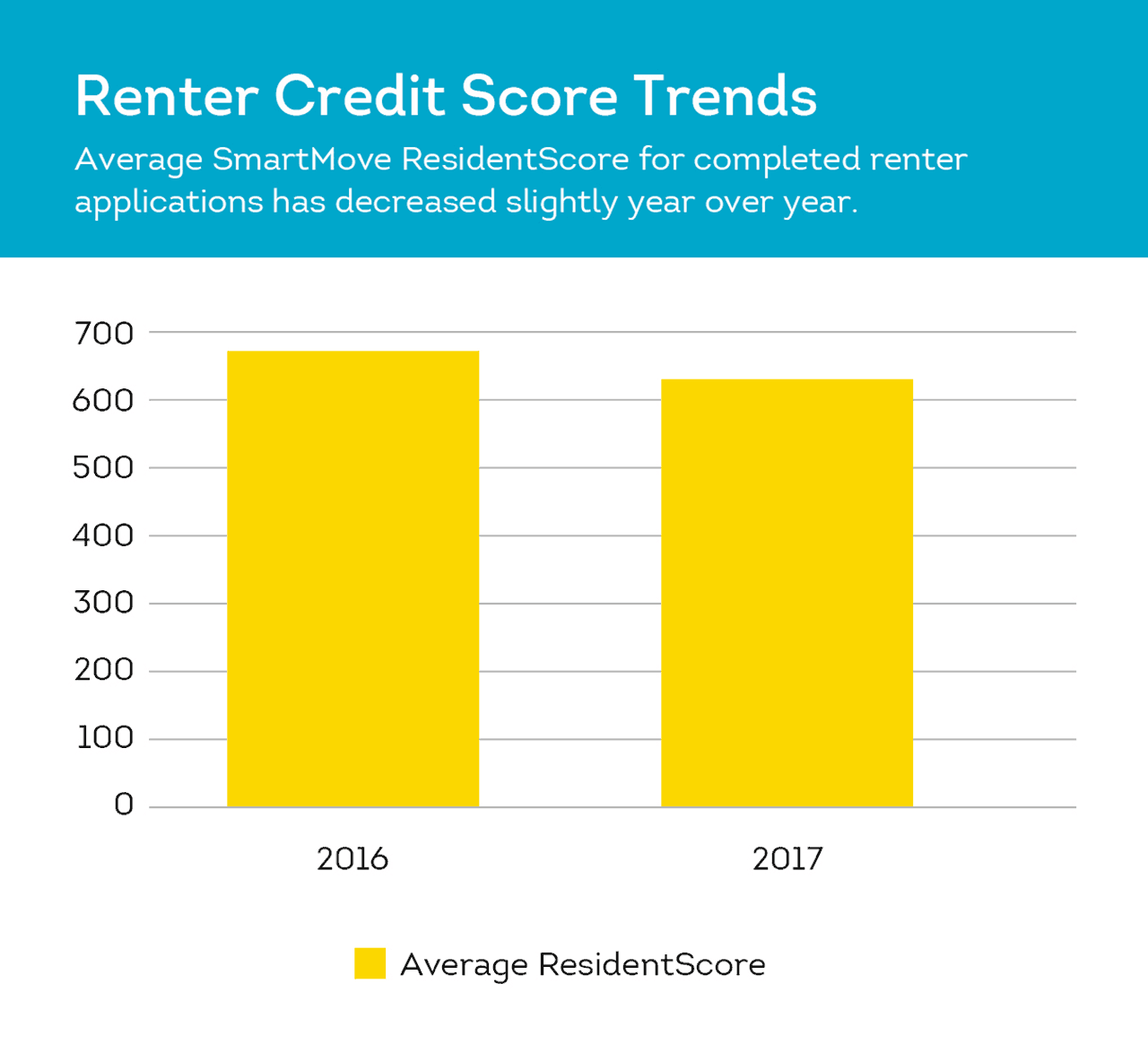
While the Average ResidentScore Has Decreased Slightly, Landlords Should Be Aware That It Is Still a Landlord’s Market. The Rental Market Is Strong with Many People Seeking Rental Housing, and It Makes Sense That Landlords Set Higher Standards for Their Tenants. Of Course, It’s Always a Good Idea to Consider All of the Information Presented in a Full Credit Report and Review an Applicant’s Eviction History to Make Sure You Aren’t Screening Out Potentially Good Tenants. Independent Landlords Have the Advantage of Being More Flexible with Their Screening Policies, Which Can Give Them a Leg Up on Competition from Large Property Management Companies.
SmartMove ResidentScore Is Built Specifically to Predict the Outcome of a Lease, Meaning That It Is More Likely to Predict a Tenant Outcome Using ResidentScore Than a Typical Credit Score. Prospective Tenants Are Awarded a Score Ranging from 350-850, with 850 Being the Best Possible Score. A ResidentScore of 650 Is Well Within the “Accept” Range of 560 and Above.
2. 91 of the 100 Largest U.S. Cities Have Seen Rent Increases over the Last Year
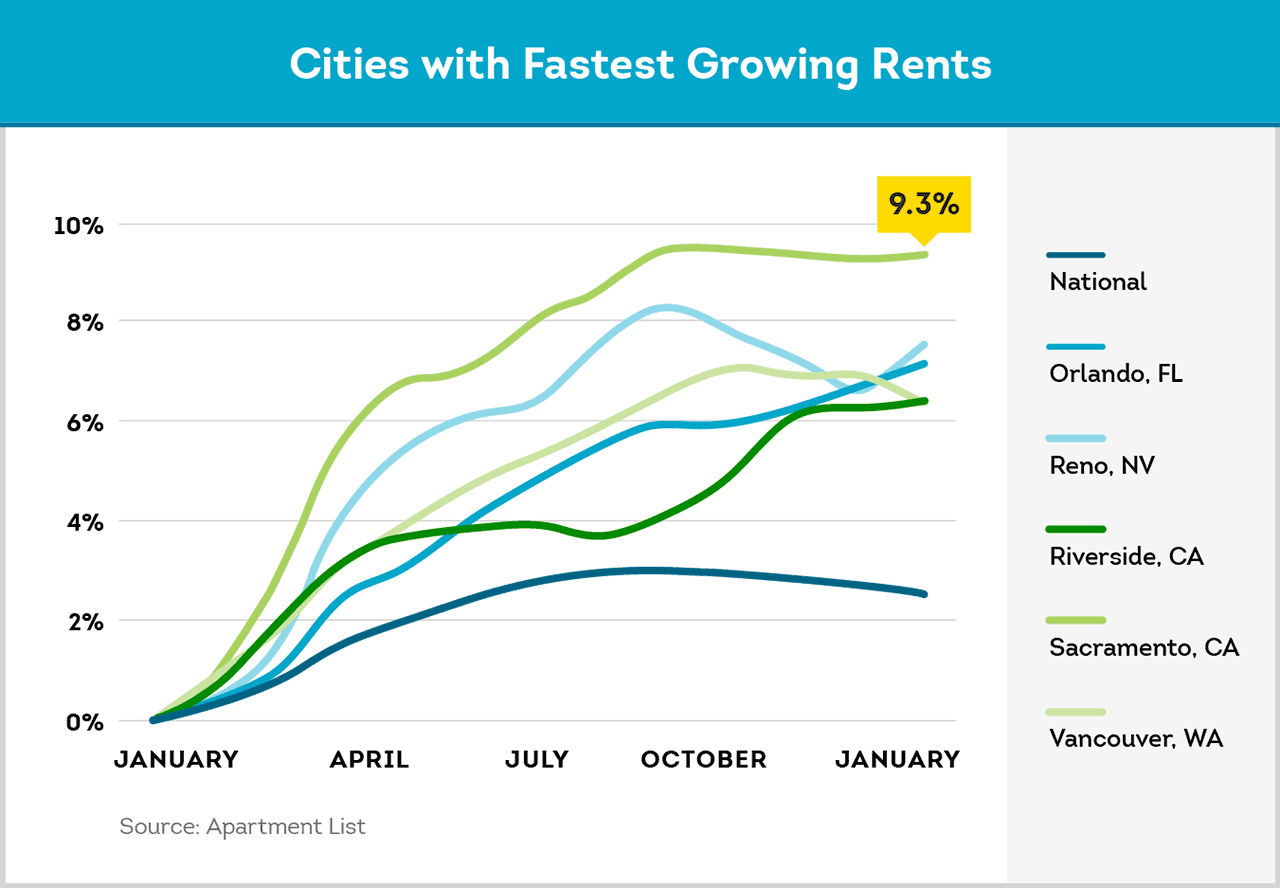
According to ApartmentList’s National Rent Index, Rents Continue to Rise Yearly in Almost All of the Nation’s Largest Markets. Sacramento, California Continues to Experience the Highest Rent Growth with an Increase of 9.3 Percent. On the State Level, Idaho Experienced the Fastest Annual Growth at 4.9 Percent. Despite Overall Increases in Rent, the Index Shows an Annual Seasonal Slowdown in the Fall and Winter Months. While You May Not Be Able to Time When Your Lease Ends, It’s a Good Idea to Keep in Mind That Rental Activity and Therefore Fair Market Value Can Change from Month to Month. When It Comes Time to Find a New Tenant, Be Sure You Know How to Determine Fair Market Rent So You’re Not Listing Your Unit Too Low or Too High.
3. Landlords Screen an Average of 2 Applicants per Rental Property
TransUnion SmartMove Data Pulled During the Peak Renting Season Between April 2017 and August 2017 Shows That Landlords Screen an Average of Two Applicants per Rental Property. The Best Way to Find a Good Tenant in a Reasonable Amount of Time Is to Cast a Wide Net, So You Can Be Choosy About Who You Allow to Rent Property. In Order to Attract More Renters to Your Property, You Need to Know How to Write an Effective Rental Advertisement That Will Get More People to Respond to Your Ad.
4. 36.6% of Households Are Renting Their Home
The Pew Research Center’s Analysis of U.S. Census Bureau Data Shows That More U.S. Households Are Renting Than at Any Point in 50 Years, with 36.6 Percent of Households Renting Their Home. The Last Time the Renting Level Was This High Was in 1965, with a Rate of 37 Percent.
The Recent Numbers Include Groups That Have Been Traditionally Less Likely to Rent, Such as Adults Aged 45 to 64. Around 65 Percent of Renters Do So Due to Financial Reasons, While 32 Percent Rent as a Matter of Choice. While Homeownership Remains a Goal for Many Renters, Landlords Are at an Advantage in a Rental Market with High Demand. Higher Demand Means Landlords Can Typically Charge Higher Rental Rates and Be Choosier About to Whom They Rent.
5. Individual Investors Account for 74.4% of Rental Properties
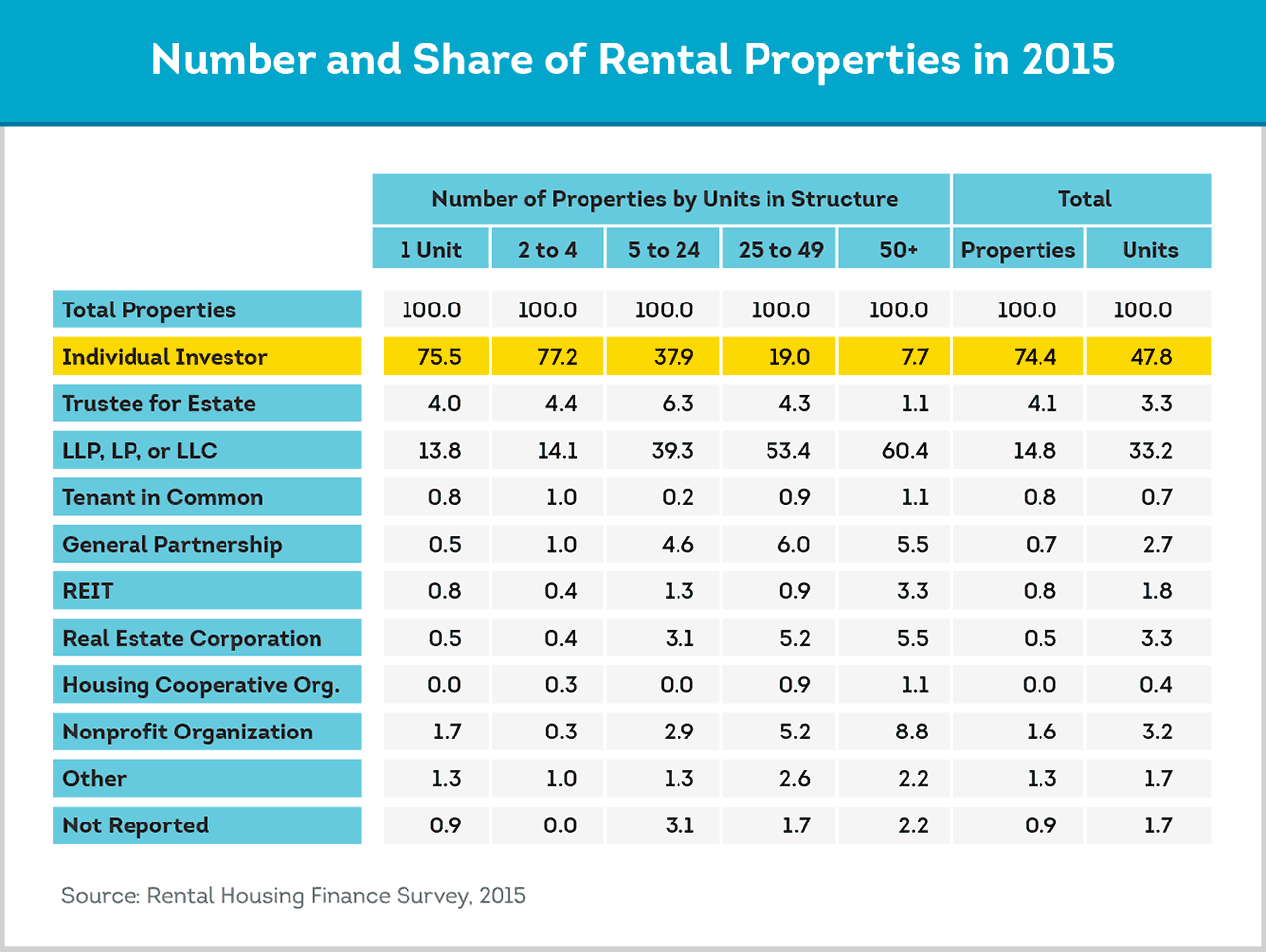
According to the U.S. Census Bureau’s 2015 Rental Housing Finance Survey, Individual Investors Made Up the Largest Percentage of the Housing Market. However, in an Analysis Done by the Harvard Joint Center for Housing Studies Shows That the Number and Share of Rental Properties Owned by Non-Individual Investors Rose Between 2001 and 2015. This Is Especially True for Properties with a Larger Number of Units. Individual Landlords Had the Highest Share of Properties with One or Two to Four Units in the Structure.
For Many Independent Landlords, the Process of Selecting Candidates and Setting Rents Is Not as Impersonal as It Is for Institutional Investors. This Can Give the Individual Landlord an Advantage. Time Reports the Best Way to Make More Money Is to Focus on Your Current Properties, Rather Than to Acquire as Many as Possible. Smaller Landlords Can Focus on Retaining Tenants for Longer Periods of Time, Increasing Rent Strategically (Rather Than Relying on Algorithms), and Being Diligent with Late Fees.
6. In 66% of Housing Markets, Buying Is More Affordable Than Renting
ATTOM Data Solution’s 2017 Rental Affordability Report Shows That Buying Is Slightly More Affordable Than Renting in a Majority of the Markets They Analyzed. The Report Shows That on Average, Monthly Fair Market Rent on a 3-Bedroom Property Requires 38.6 Percent of an Average Salary, While a Monthly House Payment on a Median-Priced Home Requires 36.6 Percent. According to Zillow Research, the Median U.S. Rent Takes 29.1 Percent of the Typical Household Income and Renters in 34 of the Nation’s 35 Largest Markets Spend a Larger Share of Income on Rent Now Than They Did Historically.
On the Other Hand, They Project That If Mortgage Rates Keep Rising, Renters Will Find It Difficult to Make the Leap to Homeownership. In a Majority of the Markets, Both Rent and Home Prices Are Rising Faster Than Wages. Since Homeownership Requires a Down Payment and Meeting Tight Lending Requirements, Renters May Not Be Able to Purchase a Home Even If the Monthly Payments Are More Affordable. This Would Be Good News for Landlords Who Would Continue to Benefit from High Demand for Rental Properties.
7. 28% Percent of SmartMove Applicants Had a Criminal Hit on Their Record
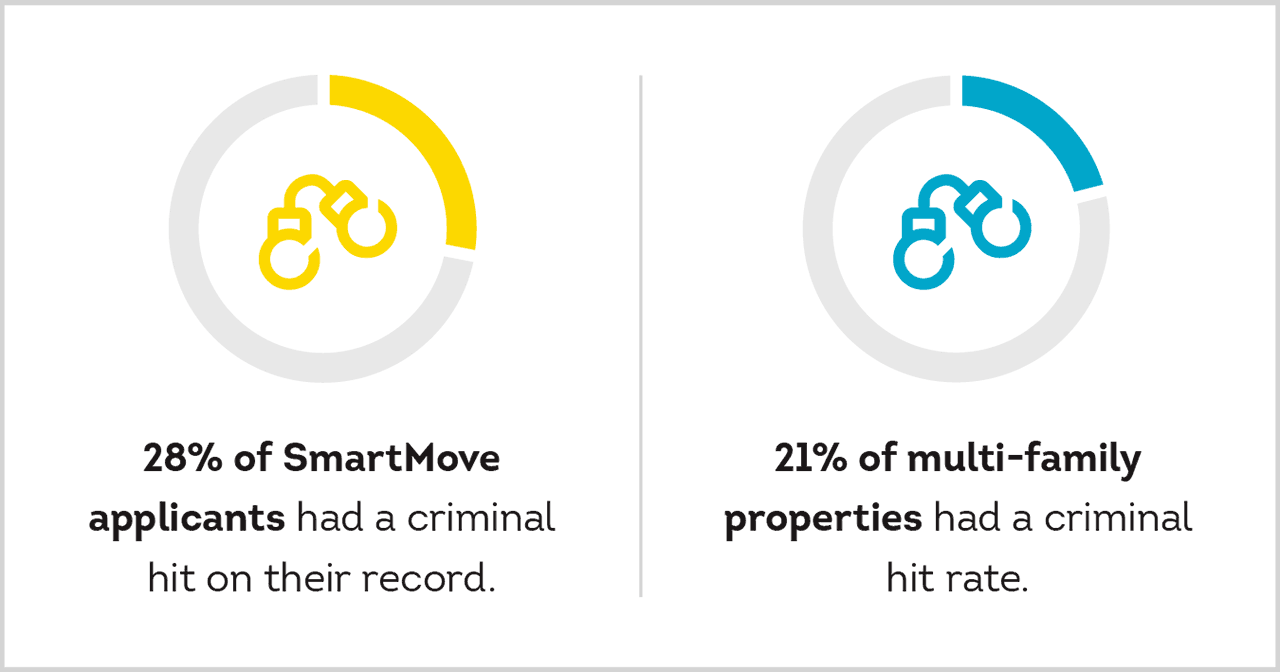
TransUnion SmartMove data shows that in 2016-2017, 28 percent of SmartMove applicants had a criminal hit on their record. However, multi-family properties only had a criminal hit rate of 21 percent. Independent Landlords Want to Be Especially Certain They Conduct a Criminal Background Check Since They Could Be More Likely to Get Applicants with a Criminal Record Than a Large Apartment Complex.
Every Landlord Will Have Their Own Criteria for What Criminal Convictions Are of Concern, and Having a Report That Clearly Outlines the Court Charge Can Help You Determine the Severity and Timing of the Incident. This Allows You to Consider the Charge on a Case-by-Case Basis, as Recommended by HUD’s Guidance to Landlords. TransUnion SmartMove Pulls from 43 State Criminal Databases, Most Wanted Databases, and the National Sex Offender Public Registry.
8. More of Renter Income Going Toward Paying the Rent
SmartMove Data, Along with National Data, Is Showing That Renters Are Getting Stretched in Terms Being Able to Afford Rent. Zillow Reported That the Median U.S. Rent Accounts for 29.1% of a Typical Household Income, Up from 25.8% in 2000.
Based on a SmartMove Survey of Independent Landlords in 2016, Non-Payment of Rent Was Cited as the #1 Concern.
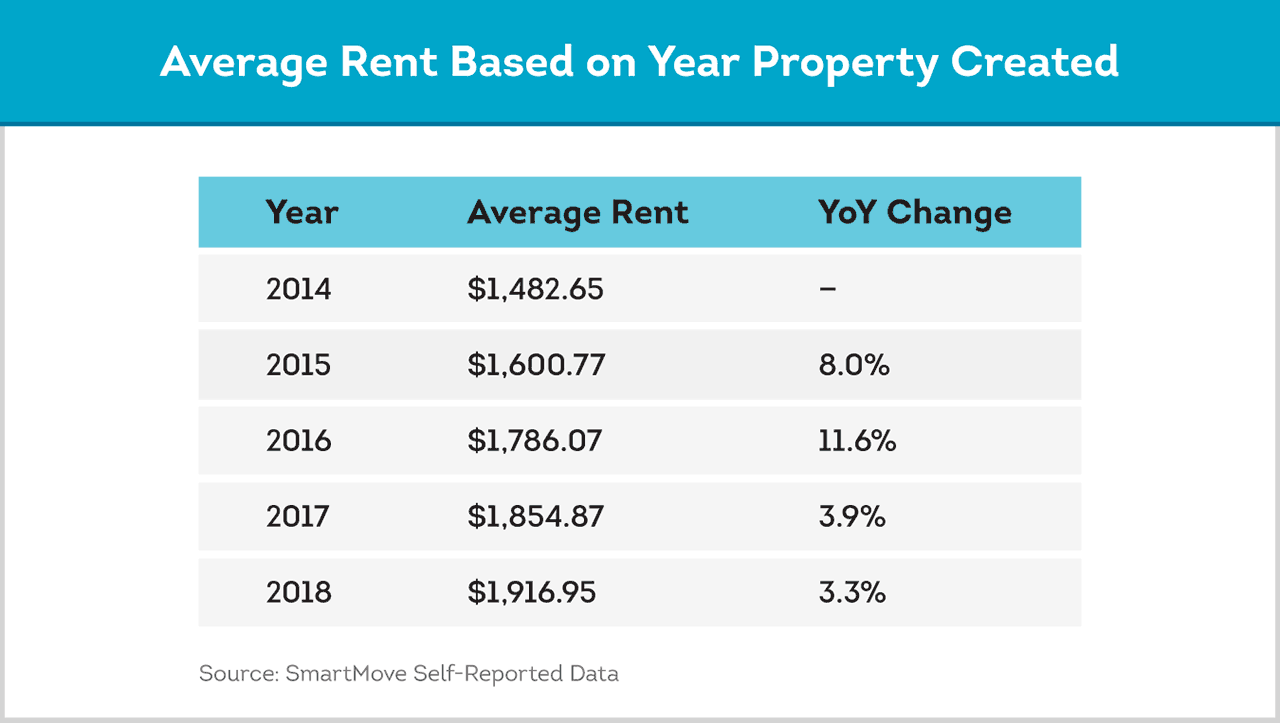
With rent prices growing on average substantially faster than wages over the past few years, this puts even more emphasis on landlords to ensure that renters can afford their unit.
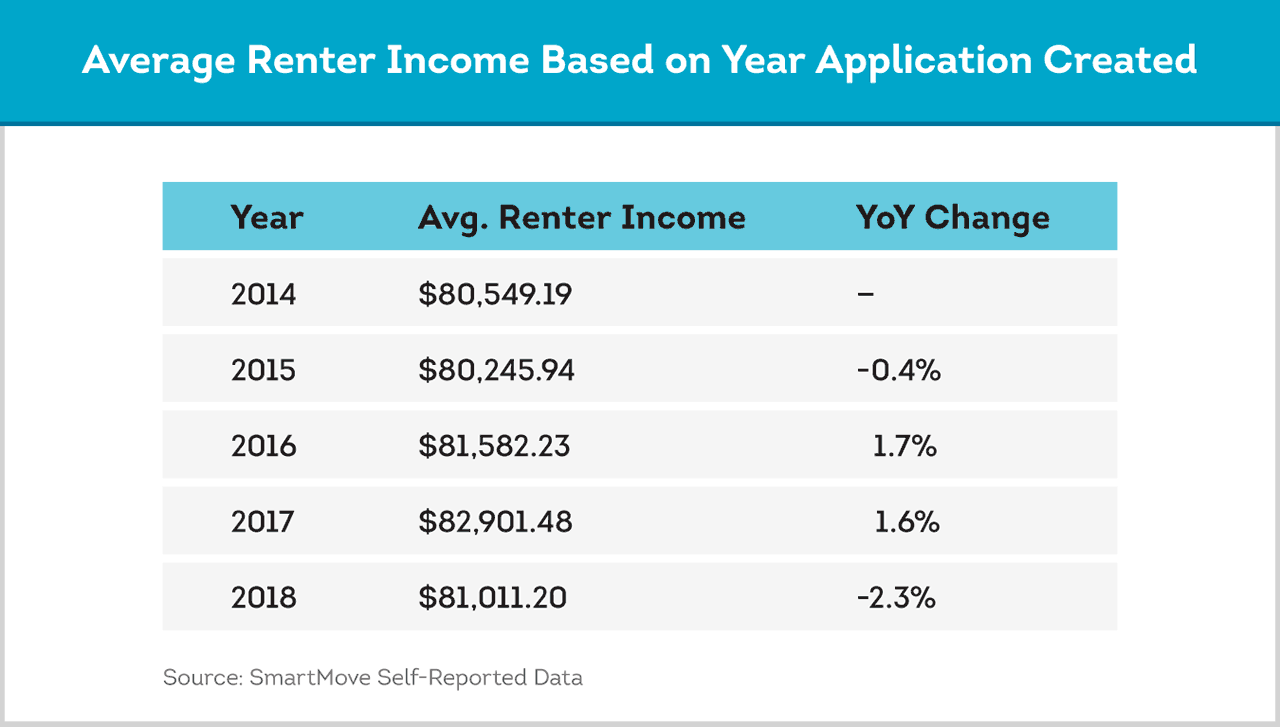
Renter Incomes Are Staying Relative Flat, and Not Growing Very Much. Given This Trend and Landlord’s Need to Make Sure Tenants Can Afford the Rent. To Help Landlords, SmartMove Launched a New Product Feature Called Income Insights. Income Insights Analyzes Applicant Self-Reported Income by Comparing It to the Information in the Applicant’s Credit Report. By Looking at Credit Balances, Types of Balances That Are Carried, and How Much Is Paid Toward Balances, Income Insights Can Then Compare Credit Behavior to Applicant Self-Reported Income to Determine If Further Verification Is Necessary.
Conclusion
Even When the Demand for Rental Housing Is High, Landlords Still Need to Take Key Steps to Protect Their Investment. The First and Foremost of These Is Developing a Thorough Tenant Screening Process, to Attract Higher Quality Tenants. This Should Include a Landlord Credit Check to Get a Picture of Their Financial Situation, an Eviction Report to Get a Clear Idea of Their Rental History, and a Criminal Record Check.
TransUnion SmartMove Is the Landlord’s Solution for Great Reports, Great Convenience, and Great Tenants. Landlords Receive a Credit Report for Renters, a Criminal Background Check Drawing from Millions of Criminal Records, Eviction Records Report, a ResidentScore, and an Income Insights Report.
Know your applicant.
Additional Disclosure:
For complete details of any product mentioned in this article, visit www.transunion.com. This site is governed by the TransUnion Rental Screening Privacy Policy Privacy Notice located at TransUnion Rental Screening Solutions, Inc. Privacy Notice | TransUnion.



